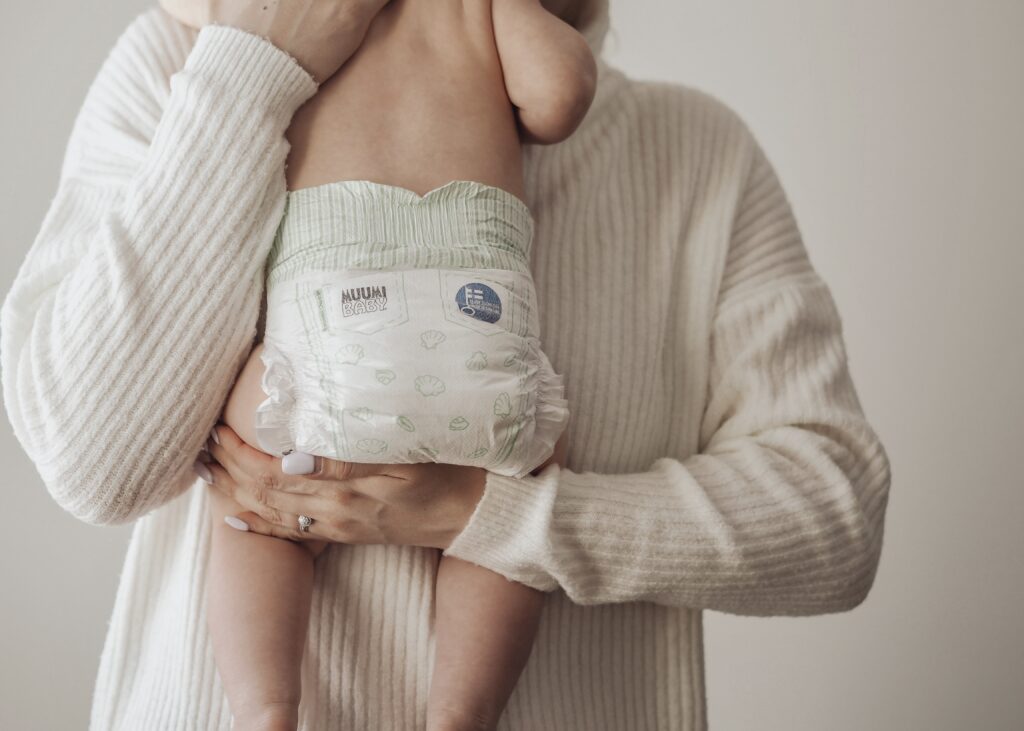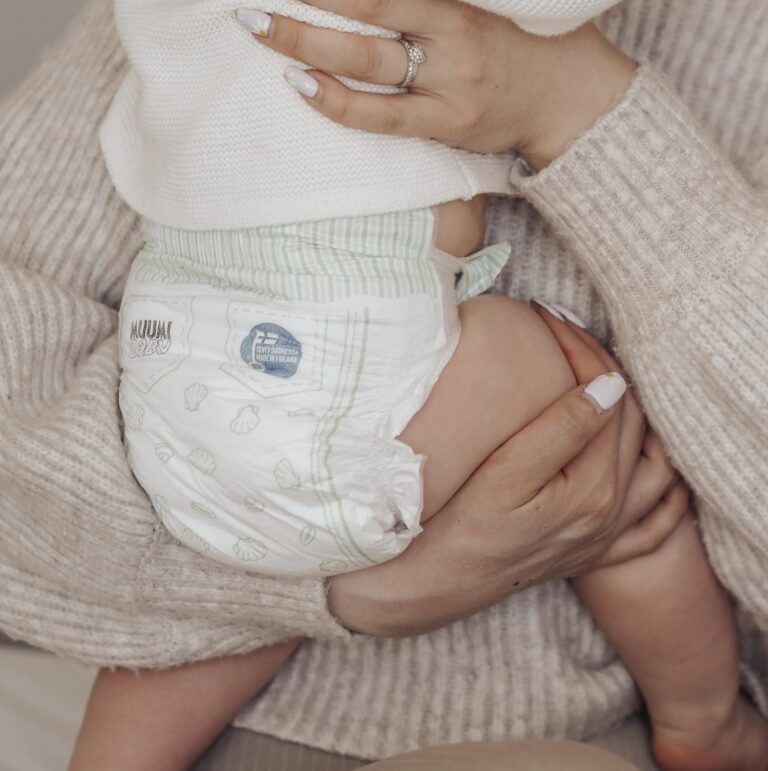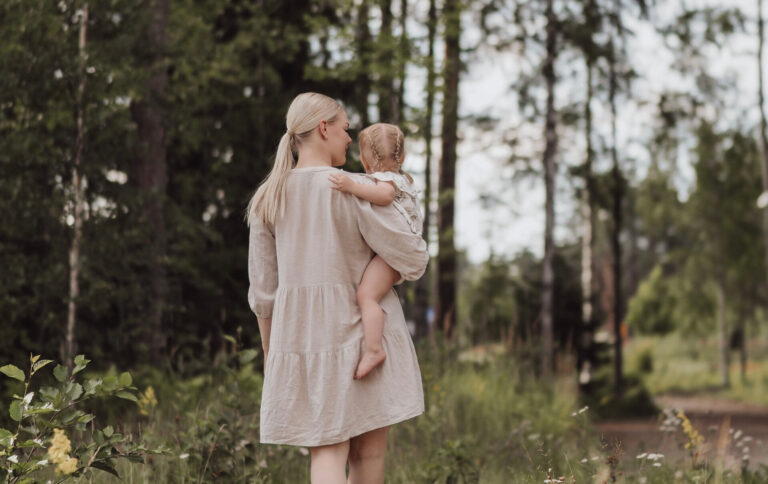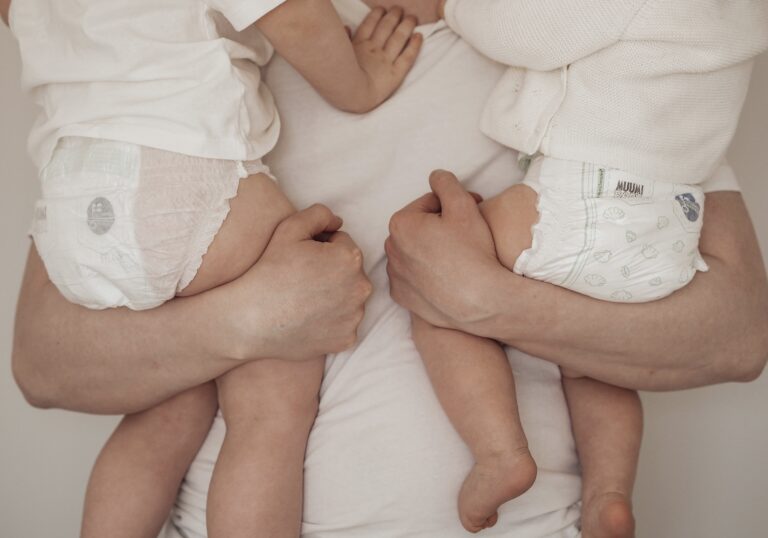Parenting a newborn is full of wonderful moments, but it also presents unique challenges. Especially for first-time parents, everyday tasks like choosing diapers can seem surprisingly complicated. In this article, we’ll delve into what all you should consider when choosing diapers for your newborn. Our aim is to provide you with essential information and useful tips to help you make the best decision to support your baby’s well-being.
Special needs of newborn skin and diapers
Baby skin is particularly sensitive and needs special care. Newborn skin is thinner than adult skin and loses moisture faster. In addition, baby skin is not yet accustomed to external stimuli such as temperature changes and different materials such as diaper materials. It is therefore essential to choose detergents, clothing and diapers that are gentle on the newborn’s skin.
When choosing diapers, it is essential to choose a product that does not cause skin irritation or allergic reactions. A good quality diaper absorbs enough moisture and at the same time ensures that your baby’s skin does not get too wet. Regular diaper changes are also key to keeping the skin dry and healthy. Diaper fit is also an important factor in caring for your newborn – a diaper that is too tight can cause irritation and chafing, while one that is too loose can leak, causing extra discomfort and mess.
How to choose the right size diaper for your baby?
Choosing the right diaper size is key to ensuring your newborn’s satisfaction and well-being. A diaper that is too big or too small can cause leaks, chafing or redness, increasing the risk of diaper rash. To find the best size, it is recommended that you choose a diaper according to your baby’s weight – there is usually a weight recommendation on the package and it is a good idea to follow it. Consider changing to a larger size when you notice the diaper starting to feel tight or leak.
During the first few months, the most common sizes are 1-2, but babies are wonderfully individual, so keep a close eye on which size feels most comfortable. Also remember that as your baby starts to move around more, the fit of the diaper can affect its effectiveness. It is therefore advisable to check the size of the diaper every few months to make sure it still best meets your baby’s needs.
Diaper rash prevention: How can diaper choices help?
Diaper rash is a common challenge for parents of babies and is caused by a number of factors, one of which is diaper choice. However, it is possible to prevent diaper rash with the right diapers and proper use. Firstly, it is essential to choose a diaper that is the right size, thus avoiding rubbing or stretching that could cause irritation. In addition, a good diaper is breathable and effectively absorbs moisture, which helps keep baby’s skin as dry as possible. Changing your baby’s diaper regularly is also very important, especially after each feeding or as soon as you notice that the diaper is wet or dirty. High-quality, moisture-wicking diapers can help maintain dry skin, especially at night.
Find out more about how often you should change your baby’s diaper. For instructions from baby to toddler, click here!

Why are Moomin Baby diapers so suitable for a newborn?
The Finnish Moomin Baby diaper is an excellent choice for your newborn. The diapers are hypoallergenic, which means that they are made with extra gentle ingredients, reducing the risk of allergic reactions on baby’s sensitive skin. In addition, the diapers do not contain perfumes or dyes, minimising the possibility of skin irritations or allergic reactions.
Moomin Baby diapers are made from high quality materials, specially selected for the well-being of children and the environment. They are also FSC-certified, which ensures that the pulp used comes from responsibly managed forests. The diapers also offer excellent absorbency, which helps prevent leaks and keep baby dry and happy. Moomin Baby diapers are designed to support the movement and growth of newborns, while providing comfort. Manufactured in Finland to ensure quality and safety, you can be confident that Moomin Baby diapers are a safe and reliable choice for your newborn baby’s needs.
We welcome you to try Moomin Baby diapers by ordering your free Diaper Hero sample here!
Tips for diaper changing
Changing diapers is an essential part of the daily routine in families with children. Diaper changing is a great opportunity to interact with your baby, and you can make it go more smoothly with a few practical tips. Firstly, make sure you have everything you need within easy reach before you change your baby’s diaper. This includes a clean diaper, wet wipes, possibly diaper cream and a garbage bag for a dirty diaper.
It is advisable to check and change the diaper regularly, for example after every meal or whenever the diaper feels full. During diaper changes, keep the baby safely on the base and always keep one hand on the baby to prevent them from moving around too much. Maintain eye contact, talk and smile at your baby to make changing a comfortable experience for both you and your baby. Washing or wiping your baby’s bottom should be done thoroughly at each diaper change to prevent the spread of bacteria and diaper rash. The use of a diaper cream can help protect your baby’s skin if necessary. And always remember to wash your own hands thoroughly after diaper changes.
For more tips and advice on diaper changing, click here!
Buying diapers and allergies: What to consider?
The skin of newborns is particularly sensitive to irritation and allergic reactions. It is therefore important to take into account the possibility of allergic reactions when purchasing diapers. Diapers can contain a wide range of materials and chemicals that can cause allergic reactions, so it is advisable to choose fragrance-free and dye-free options to avoid irritants. Diapers labelled hypoallergenic can be a good choice, as they are made from low-allergenic materials and have been tested by a dermatologist to prevent allergic reactions. However, it is important to remember that the term “hypoallergenic” does not guarantee that a baby will not react to it – every child’s skin is unique. If you notice redness, dryness, flaking or pimples on your baby’s skin that do not improve after a diaper change and thorough drying, contact your doctor or health visitor. Professionals can help you find out whether the symptoms are caused by the diaper or something else and give you advice on choosing the right diaper.










